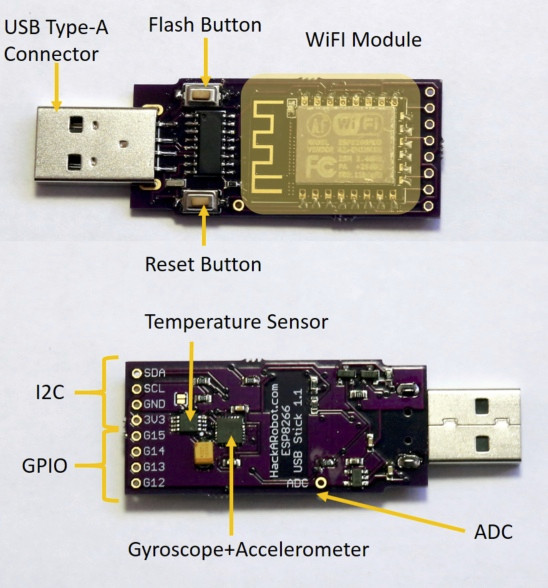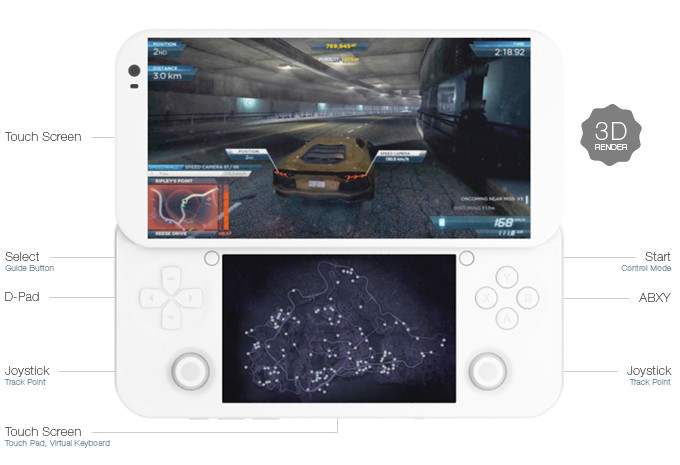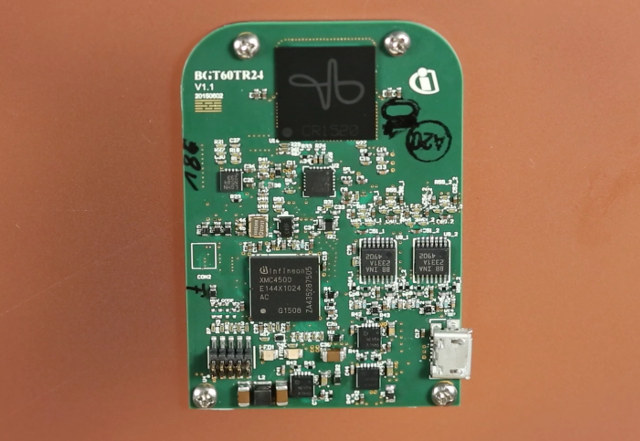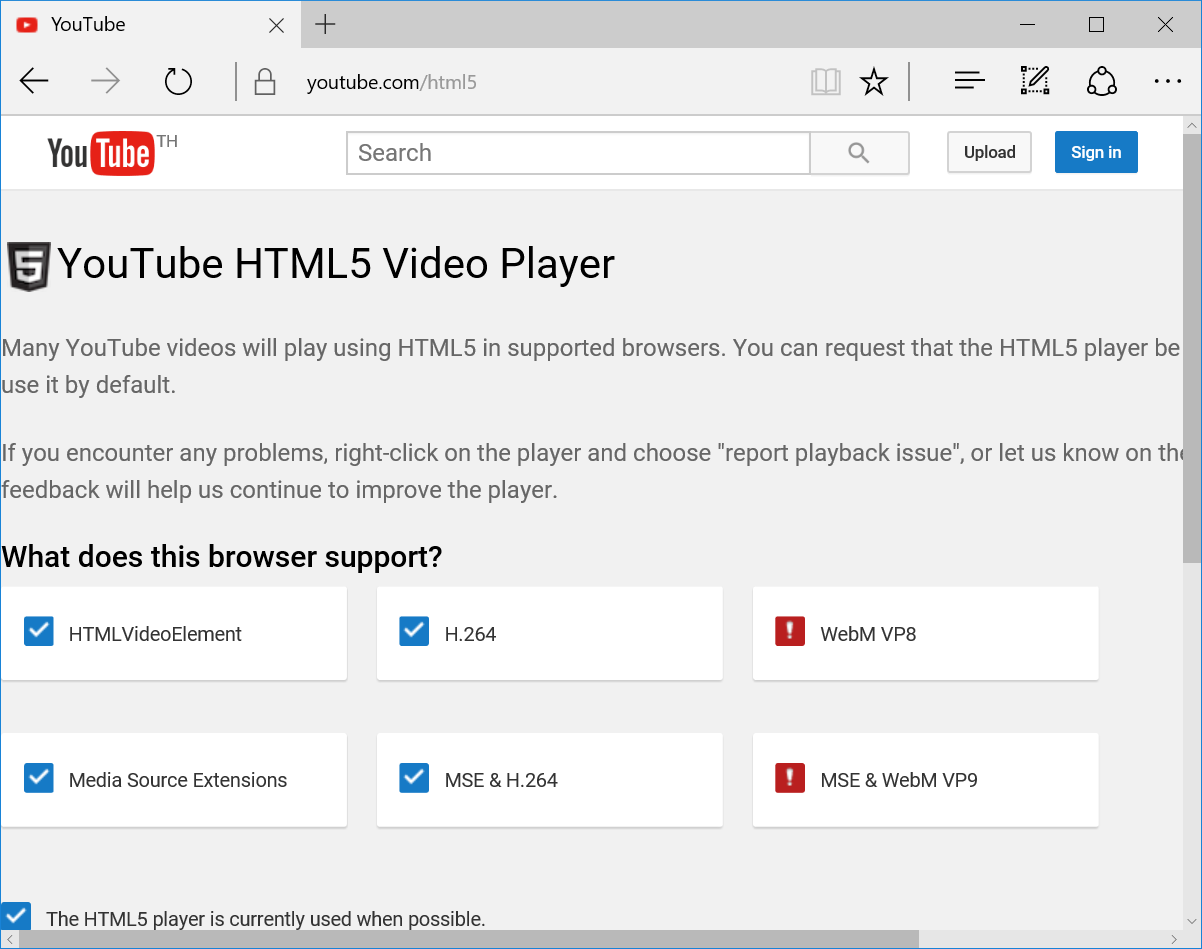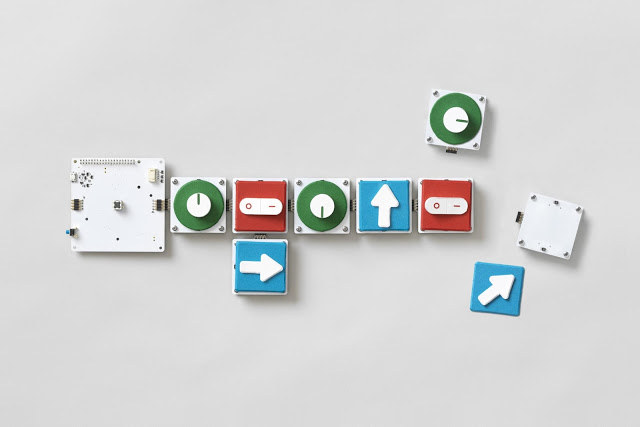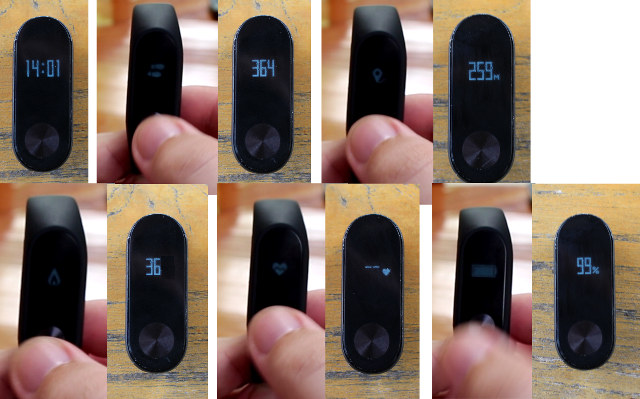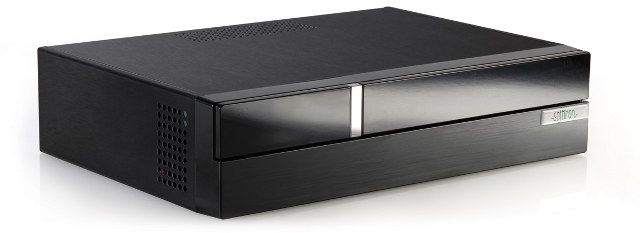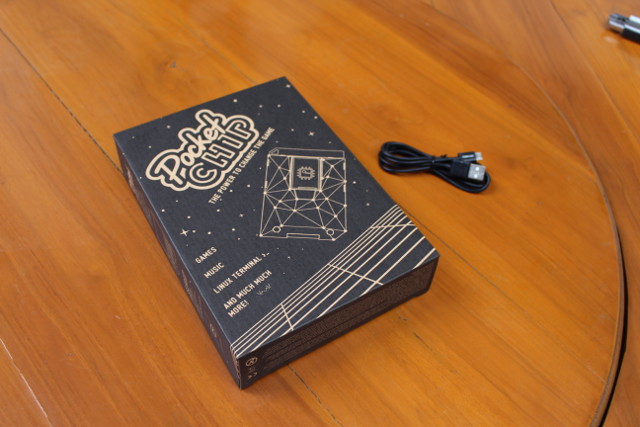There are now plenty of Espressif ESP8266 boards or module to play with, but most of them require some cables or wires, at least for power. WiThumb does not need any of that as it’s designed to be plugged into any USB ports, and includes a 6-axis motion sensor, and a temperature sensor. WiThumb USB dongle specifications: SoC – Espressif ESP8266 32-bit MCU with 802.11b/g/n WiFi Storage – 4MB Flash memory Sensors – Temperature sensor (+/- 0.25C typical accuracy, -40 to 125 C range), 6-axis gyroscope + accelerometer Expansion – Breadboard friendly through holes with 1x 10-bit ADC, I2C and 4x GPIOs USB – USB type A connector Misc – Reset and flash buttons Power – 5V via USB port Dimensions – 4.8 x 2.2 cm The USB stick can be programmed like most ESP8266 board, i.e. via USB using the Arduino IDE. In case you wonder what kind of […]
PGS Portable Game Console Runs Windows 10 & Android 6.0 on Intel Atom X7-Z8750 Processor (Crowdfunding)
GPD HD Win portable game console is getting some competition, albeit in a slightly different form factor, with PGS portable game console based on Intel Atom x7-Z8750 quad core processor, running Windows 10 and Android 6.0, and featuring D-Pad, buttons, and a touch pad, replacing the QWERTY keyboard in GPD device. Two models are available, namely PGS Lite and PGS Hardcore, with the following specifications: SoC – Intel Atom x7-Z8750 quad-core “Cherry Trail” processor @ 1.44/2.56 GHz (Burst) with 16EU Intel HD Gen8 graphics @ up to 600MHz System Memory Lite – 4GB LPDDR3-1600 Hardcore – 8GB LPDDR3-1600 Storage Lite – 64GB eMMC flash Hardcore – 128 GB SSD Display Lite – 5.5″ capacitive touch IPS screen; 1280×720 resolution Hardcore – 5.7″ capacitive touch AMOLED screen; 2560×1440 resolution Video Output – 1x micro HDMI port Audio micro HDMI, 3.5mm earphone jack Lite – Stereo speakers Hardcore – 5.0 speakers Connectivity […]
Infineon Showcases the Radar Board used in Google’s Project Soli, and Sense2Go Development Kit (Video)
Google’s Project Soli sensing technology uses a miniature radar to detect touchless gesture interactions, so that you can control devices such as wearables using gestures without having to physical touch the product. The 60 GHz radar technology used in the project has been developed by Infineon, and the company was recently interviewed by Arrow Electronics where they showcased Soli board, as well as another 24 GHz radar development kit called Sense2Go. The Soli board called BGT60TR24 features Infineon XMC4500 ARM Cortex M4 MCU, and a 60 GHz “CRIS20” radar chip designed specially for Project Soli by Infineon, and allowing 20mm resolution, falling to less than one millimeter with Google’s algorithms. The micro USB port will be used for power and programming. This board should be the one included in Project Soli development kit to be shipped to developers this fall. Infineon also have a Sense2Go 24GHz sensor development kit that […]
Improve YouTube Video Playback on Low Power Intel mini PCs by Disabling VP9 Support in Chrome or Firefox
I’ve been reviewing several Intel Bay Trail, Cherry Trail, and Braswell mini PCs in the last year or so, and I always end up recommending Microsoft Edge browser over Firefox or Chrome for people wanting to watch YouTube videos, as the last two browsers always drop many frames with the video stuttering regularly. However I noticed that while Edge is playing MP4/AVC (H.264) video, the other two browser would normally stream WebM/VP9 videos, and it could be the cause of the problem as H.264 can be hardware accelerated, but VP9 not, and the low power processor might not quite powerful enough to handle 1080p VP9 video decoding smoothly. So I investigated the issues with Vorke V1 mini PC powered by an Intel Celeron J3160 processor (6W TDP) with the three browsers by first checking enabled codecs in YouTube HTML5 page. Microsoft Edge has both VP8 and VP9 disabled When I […]
Raspberry Pi Zero Based Google’s Project Bloks Aims to Teach Programming to Young Children
Visual programming development tools such as Scratch or Blockly are now becoming more popular to introduce school children to programming, and Google Research is now working on bringing the software visual programming concept to physical blocks “programming” though Project Bloks targeting younger children who may not be able to write or read yet. It might also help older children grasping programming concepts faster than when programming by typing on a keyboard. Project Bloks is comprised of three main hardware components connected together: Pucks – Those are the buttons, dials, switches, and other inputs from the project. Pucks have no active electronics, and even a piece of paper with some conductive ink could be a Puck. Base Boards – They read a Puck’s instruction through a capacitive sensor, and forward a Puck’s command to the Brain Board. Each Base Board is also fitted with a haptic motor & LEDs, and can […]
Review of Xiaomi Mi Band 2 Activity Tracker
I’ve been using Xiaomi Mi Band 2 for a little over two weeks now, so I’m not ready to report my findings, and the results are mixed. If you are interesting in checking out the accessories, and physical aspect of the watch, feel free to read Xiaomi Mi Band 2 unboxing post first. Since the new model adds an OLED display, let’s first see what options it has to offer. The display is off by default, and pressing the capacitive touch button (please note that it’s not a real physical button, so it won’t work with most gloves for example) will turn on the display for 5 seconds. You can keep pressing to go through time, step count, distance, calories burnt, heart rate monitor, and battery level. Except for time, there’s a icon shown before display the actual value. If you find that the display does not look clear, that’s […]
$599 Softiron Overdrive 1000 Server is Powered by AMD Opteron A1100 64-bit ARM Processor
ARMv8 servers have been around for a year or so, but normally only available to companies, mostly due to their very high price. LeMaker Cello board based on AMD Opteron A1120 quad core SoC have changed that since it’s priced at $299, but I’m not sure it’s shipping right now, and it’s not a complete solution fitted with memory and storage, and lacks an enclosure. The good news is that Softiron has just launched Overdrive 1000 server powered by AMD Opteron A1100 series processor, with 8GB DDR4 RAM, a 1TB drive, and a case. Softiron Overdrive 1000 server specifications: SoC – AMD Opteron A1100 series quad core ARM Cortex A57 processor System Memory – 2x RDIMM slots fitted with 8GB DDR4 DRAM and expandable to 64GB Storage – 2x SATA 3.0 connector with one fitted with a 1TB HDD Connectivity – 1x GBase-T Ethernet USB – 2x USB 3.0 ports […]
Review of PocketCHIP Hackable Handheld Linux Computer
It’s not that easy to describe PocketC.H.I.P in a couple of words, as it’s so versatile. It’s a Debian based portable Linux computer with a resistive touchscreen and battery, but also a retro gaming console thanks to PICO-8, as well as a hardware development platform for IoT application with expansion header providing access to I/Os including GPIOs, I2C, SPI, UART…, and WiFi and Bluetooth connectivity. Furthermore you can easily dismantle the device, in order to use the CHIP board, based on Allwinner R8 Cortex A8 processor, for a different project. So when Next Thing asked me if I was interested in reviewing Pocket CHIP, I was pretty excited, but when I received it, I scratched my head as there are so many ways to review the item, and it works out of the box with the firmware pre-loaded inside the internal flash, so a getting starting guide would have been […]


